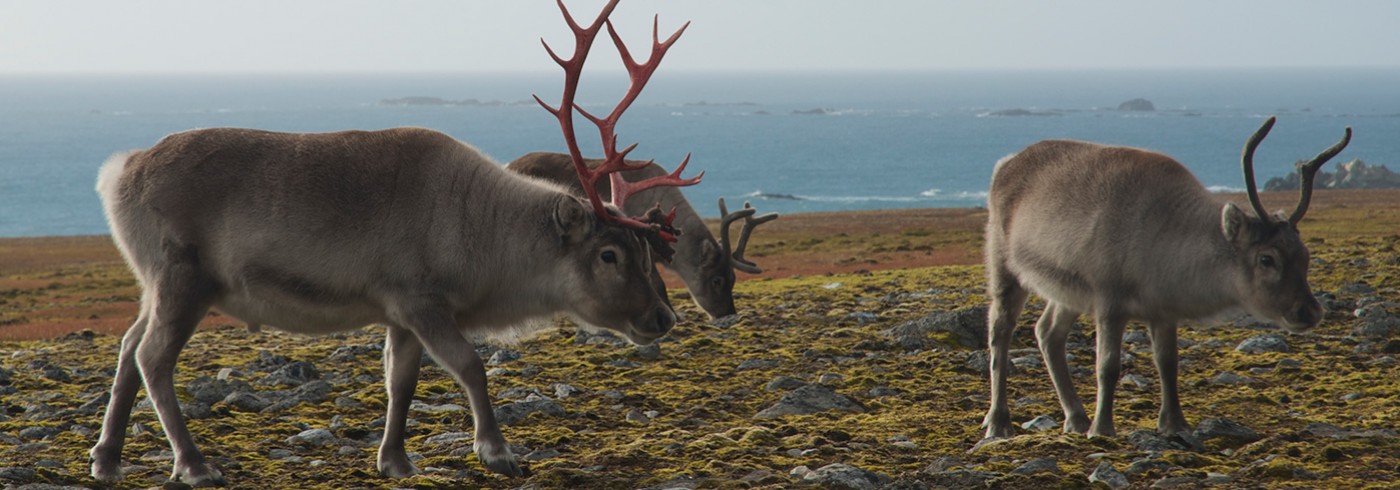How is the vegetation of the tundra affected by the absence of reindeer?
22 July 2017 - 4 August 2017
Two of the exclosures in Semmeldalen. Photo: Elin Lindén

Elin have just taken a soil sample in one of the exclosures. Photo: Arvid Alm
One of the most important herbivores in the Arctic is the reindeer. They are known for affecting what plant species exist in the Arctic, e.g. reindeer grazing can decrease the spread of trees, tall shrub and herbs. The reindeer also affect the nutrient cycle of the vegetation, the ecosystem processes and how the vegetation responses to climate change. In order to determine future vegetation patterns and biodiversity in the Arctic it is important to study the interaction between plants and herbivores.
About 15–20 years ago a number of exclosures were built on several locations in the Arctic, to keep reindeer out. By comparing data from when the exclosures were built with current data, it is possible to see how the grazing animals have affected the outer vegetation. Thus it is possible to see the long-term effects of reindeer grazing on the tundra vegetation and the nutrient cycle in the Arctic.

Reindeers in Semmeldalen. Photo: Elin Lindén

Plant species composition inventory with a point frequency method. Photo: Arvid Alm
In 2017 the exclosures and the surrounding areas were re-inventoried in Semmeldalen on Svalbard. During the inventory the plant species composition, the greeness of the vegetation, leaf area index (LAI) and how much light the vegetation reflects, was measured which can affect the nutrient cycle, energy balance and greenhouse gas fluxes etc. Soil samples were taken for analyses of nitrogen and phosphorus.
This summer’s field work was successful and the collected data will be of great importance when it comes to understanding how the Arctic vegetation will respond to future climate change. In summer 2018 exclosures on at least three locations; Toolik, Alaska, Kangerlussuaq, Greenland and Ny-Ålesund, Svalbard, will be added to the study in order to include more climate conditions, vegetation types and intensity of grazing.

